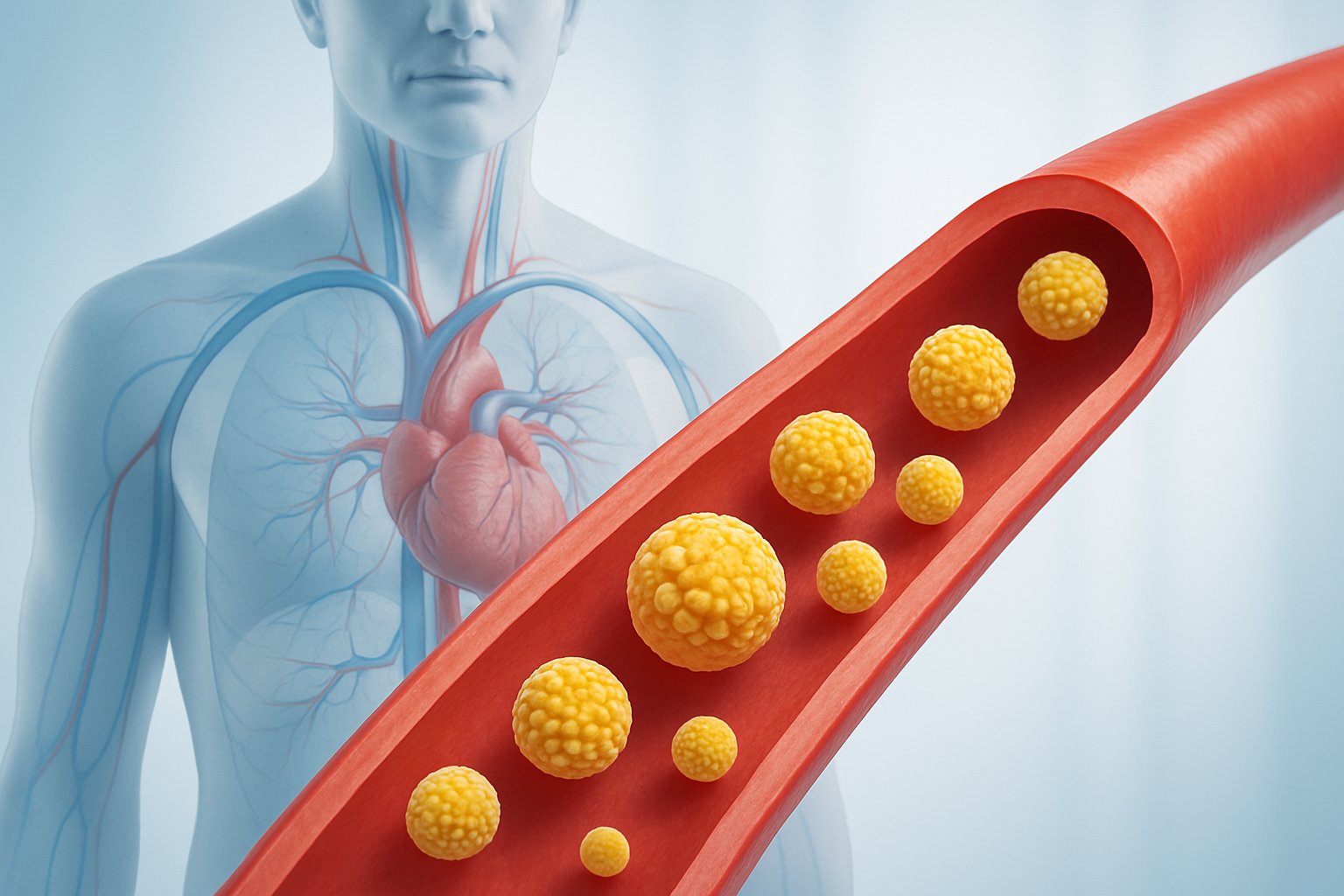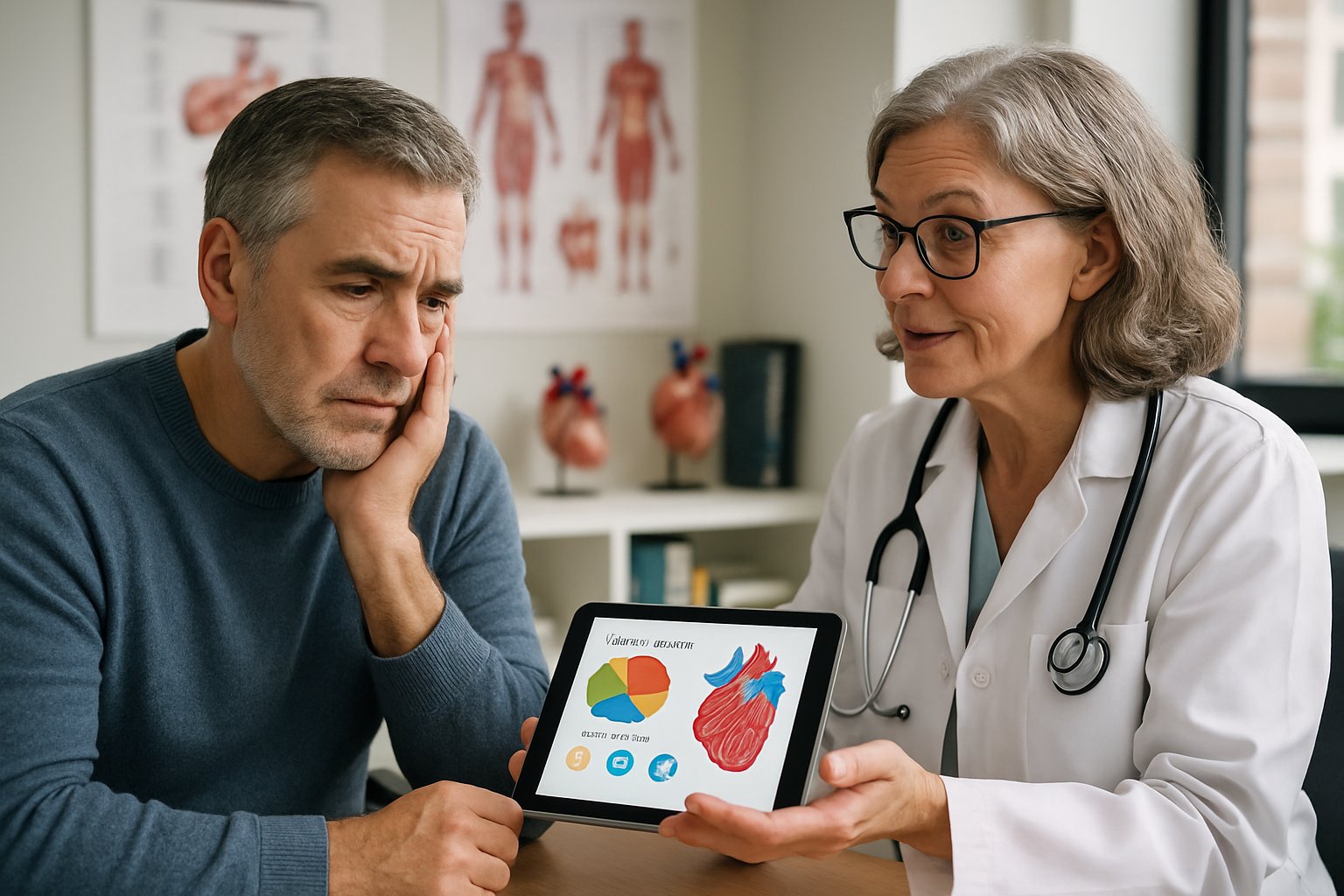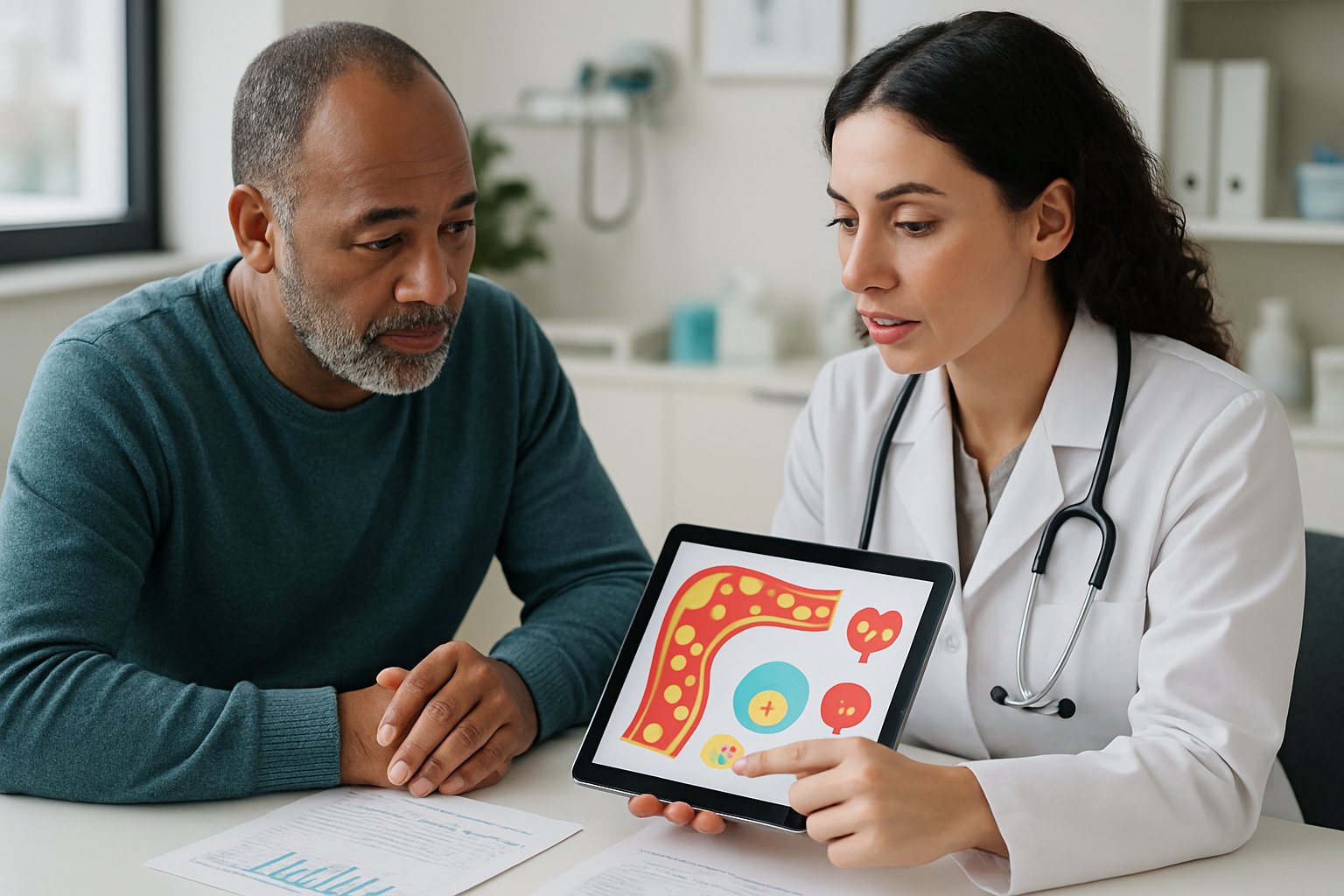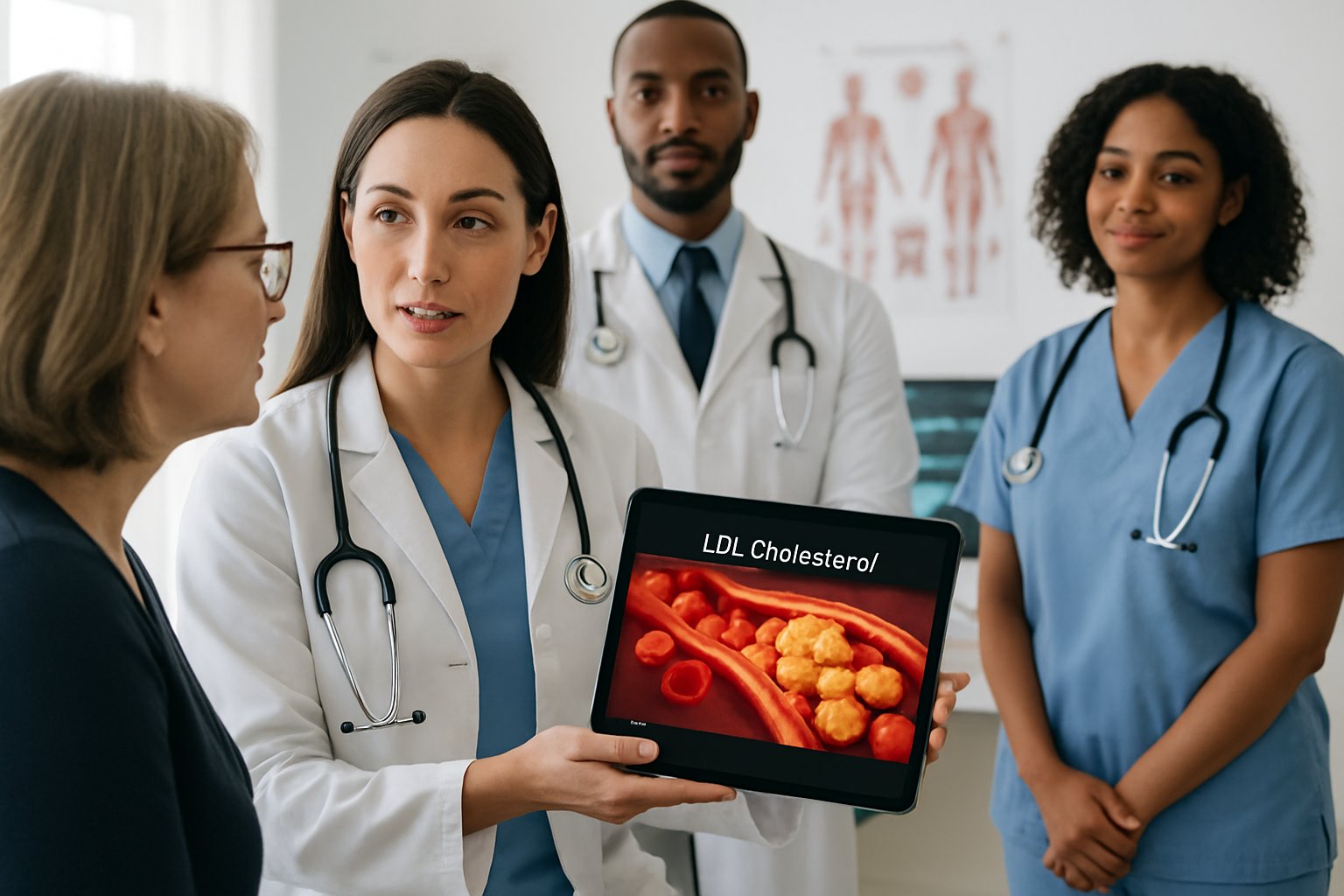Most people worry about high cholesterol, but low LDL cholesterol can also cause health problems. While your body needs some LDL cholesterol for important functions like making hormones and supporting cell health, extremely low levels may lead to muscle pain, depression, and other complications. Understanding what happens when LDL drops too low helps people make better decisions about their health.

The body uses cholesterol for many essential processes. When LDL cholesterol falls below certain levels, these important functions can suffer. Low cholesterol levels may contribute to conditions[1] like muscle weakness, blood in urine, and even increased risk of stroke or cancer, though these effects are not common.
Doctors generally consider LDL cholesterol below 50 mg/dL as low, and levels under 20 mg/dL as extremely low. However, some people with very high heart disease risk may benefit from cholesterol levels below 55 mg/dL. The right cholesterol level depends on each person’s health situation and risk factors.
Key Takeaways
- LDL cholesterol below 50 mg/dL may be too low and can interfere with hormone production and cell function
- Very low LDL levels may increase risk[1] of muscle problems, depression, and other health issues
- Treatment for low cholesterol focuses on addressing the underlying cause, such as infections, medications, or genetic factors
Understanding LDL Cholesterol and Its Role in the Body

LDL cholesterol serves as the body’s transport system for moving cholesterol from the liver to cells throughout the body. While often called “bad” cholesterol, LDL plays essential roles in cell function and hormone production.
What Is LDL Cholesterol?
Low-density lipoprotein (LDL) cholesterol is a lipid-protein complex that transports cholesterol from the liver to cells[2] and tissues throughout the body. These lipoproteins carry fatty acids and cholesterol to organs that need them for important functions.
LDL cholesterol gets its “bad” reputation because high LDL levels can build up in arteries[3], increasing the risk of heart disease and stroke. However, the body needs some LDL cholesterol to function properly.
There are two main types of LDL particles. Large, fluffy type A particles pose less risk to heart health. Small, dense type B particles are more likely to penetrate artery walls and cause plaque buildup.
Normal LDL cholesterol levels:
- Optimal: Less than 100 mg/dL
- Acceptable: 100-129 mg/dL
- High: 160 mg/dL or above
LDL Versus HDL: Key Differences
HDL and LDL cholesterol work in opposite directions in the body. HDL cholesterol carries cholesterol from arteries and tissues back to the liver[2] for removal or recycling.
LDL cholesterol moves in the other direction. It transports cholesterol from the liver out to cells that need it for building cell membranes and making hormones.
Key differences between LDL and HDL:
| LDL Cholesterol | HDL Cholesterol |
|---|---|
| Carries cholesterol to cells | Returns cholesterol to liver |
| Called “bad” cholesterol | Called “good” cholesterol |
| High levels increase heart disease risk | High levels protect against heart disease |
| Dense, small particles can damage arteries | Helps remove cholesterol from arteries |
The ratio between HDL and LDL cholesterol levels matters more than individual numbers. Higher HDL levels help balance out LDL cholesterol in the bloodstream.
Why the Body Needs Cholesterol
Cholesterol serves several critical functions that keep the body healthy. Every cell membrane contains cholesterol, which helps maintain the right thickness and flexibility for proper cell function.
The body uses cholesterol to produce important hormones. These include sex hormones like testosterone and estrogen, plus stress hormones like cortisol. Without enough cholesterol, hormone production suffers.
Cholesterol also helps the liver make bile acids. These acids break down fats from food during digestion. The nervous system relies on cholesterol too, as it helps form the protective coating around nerve fibers.
Essential cholesterol functions:
- Cell membrane structure – maintains cell wall integrity
- Hormone production – creates sex and stress hormones
- Bile acid formation – helps digest dietary fats
- Nerve function – protects nerve fiber coatings
The liver produces about 75% of the cholesterol the body needs. Diet provides the remaining 25%. This explains why cholesterol levels don’t always respond dramatically to dietary changes alone.
Defining Low LDL Cholesterol

Medical experts have established specific ranges to identify when LDL cholesterol drops below normal levels. LDL levels below 50 mg/dL may be considered low[1], while values under 20 mg/dL are extremely low.
What Counts as Low LDL?
Healthcare providers use specific numbers to identify low ldl cholesterol during a blood test. An LDL level below 50 milligrams per deciliter (mg/dL) typically indicates low cholesterol.
Most adults have LDL levels between 70-100 mg/dL. Values below this range may require medical attention.
A lipid profile measures total cholesterol and its components. This test shows LDL, HDL, and triglyceride levels in one report.
LDL Categories:
- Normal: 70-100 mg/dL
- Low: Below 50 mg/dL
- Extremely low: Below 20 mg/dL
Doctors order lipid profiles to check all cholesterol types at once. The test requires fasting for 9-12 hours before blood collection.
Optimal Versus Extremely Low Values
The difference between optimal and dangerously low LDL matters for health outcomes. Optimal LDL levels protect against heart disease without causing other problems.
Very low LDL cholesterol below 40 mg/dL may still provide health benefits[1] for some people. However, extremely low values can interfere with normal body functions.
Optimal LDL Ranges:
- Heart-healthy adults: 70-100 mg/dL
- High cardiovascular risk: Below 55 mg/dL
- Very high risk patients: Below 40 mg/dL
The body needs some LDL for hormone production and cell function. Total cholesterol includes LDL plus other important cholesterol types.
Very Low LDL Cholesterol: What It Means
Very low ldl cholesterol occurs when levels drop below 20 mg/dL on a blood test. This condition affects normal body processes that depend on cholesterol.
The body uses cholesterol to make hormones like testosterone and estrogen. Very low levels can disrupt these important functions.
Potential effects of very low LDL:
- Hormone production problems
- Cell membrane issues
- Vitamin D synthesis difficulties
- Muscle weakness or pain
Very low LDL may contribute to muscle damage, depression, or blood in urine[1] in some cases. However, these effects remain uncommon in most studies.
Medical professionals continue studying the long-term effects of very low LDL levels. More research is needed to understand all the risks and benefits.
Potential Consequences of Low LDL Cholesterol

While moderately low LDL cholesterol often benefits health, extremely low levels may create unexpected health risks. Research suggests that very low LDL cholesterol may contribute to muscle pain, depression, and stroke[1], though these conditions remain uncommon in most studies.
Impact on Cardiovascular Health
The relationship between very low LDL cholesterol and cardiovascular disease presents a complex picture. Most research shows that lower LDL levels reduce heart attack and stroke risk.
However, some studies suggest potential concerns with extremely low levels. The body requires small amounts of LDL cholesterol for essential cellular functions and hormone production.
Key cardiovascular considerations include:
- Stroke risk: Some research indicates a potential increased risk of hemorrhagic stroke with very low cholesterol levels
- Heart function: LDL plays a role in cell membrane structure and function throughout the cardiovascular system
- Blood vessel health: Cholesterol contributes to maintaining proper blood vessel integrity
The American Heart Association and American College of Cardiology continue to recommend aggressive LDL lowering for high-risk patients. Current guidelines suggest target levels below 70 mg/dL for many patients with cardiovascular disease.
Most cardiologists agree that the benefits of lower LDL cholesterol outweigh potential risks for most people.
Effects on Mental Health and Mood
Low cholesterol levels show connections to mental health conditions, particularly depression. The brain contains about 25% of the body’s total cholesterol, making it essential for proper neurological function.
Research indicates that depression may be linked to low cholesterol[1]. However, scientists remain unclear whether low cholesterol causes depression or depression leads to lower cholesterol levels.
Mental health impacts may include:
- Mood disorders: Studies show associations between very low cholesterol and increased depression rates
- Cognitive function: Some research suggests links between low cholesterol and dementia risk
- Brain chemistry: Cholesterol plays a role in neurotransmitter production and brain cell communication
Patients taking cholesterol-lowering medications should monitor mood changes. Those experiencing new depression symptoms should consult their healthcare provider promptly.
The relationship between cholesterol and mental health requires more research to establish clear cause-and-effect relationships.
Potential Link to Cancer Risk
Some studies suggest connections between very low cholesterol levels and increased cancer risk. The relationship appears complex and may depend on the underlying cause of low cholesterol.
Certain cancers, particularly blood cancers, can cause low cholesterol levels[1]. This makes it difficult to determine whether low cholesterol contributes to cancer development or results from existing cancer.
Cancer-related considerations include:
- Blood cancers: Leukemia and lymphoma may cause cholesterol levels to drop significantly
- Liver cancer: Affects the organ responsible for cholesterol production
- Advanced cancers: May impact nutrition and cholesterol synthesis
Meta-analysis studies show mixed results regarding cholesterol levels and cancer risk. Some research suggests very low levels may increase risk, while other studies find no significant connection.
Most medical experts emphasize that the cardiovascular benefits of appropriate cholesterol management typically outweigh potential cancer risks. Patients should discuss individual risk factors with their healthcare providers rather than avoiding necessary cholesterol treatment.
Other Health Risks and Complications

Low LDL cholesterol can affect bone density and increase fracture risk, weaken immune system function leading to more frequent infections, and impact pregnancy outcomes for both mother and baby.
Bone Health and Fracture Risk
Low cholesterol levels may contribute to weakened bones and increased fracture risk. Cholesterol plays a role in vitamin D production, which is essential for calcium absorption and bone health.
People with very low cholesterol often have reduced vitamin D levels. This can lead to poor calcium absorption in the intestines. Over time, bones become less dense and more fragile.
Risk factors include:
- LDL levels below 50 mg/dL
- Reduced vitamin D synthesis
- Poor calcium absorption
- Lower body weight
Studies show that individuals with extremely low cholesterol have higher rates of hip fractures. The risk appears greatest in older adults who already have other bone health concerns.
Women after menopause face additional risks. Low cholesterol combined with hormonal changes can accelerate bone loss. This creates a double threat to bone density.
Susceptibility to Infections
Low cholesterol may weaken the immune system’s ability to fight off infections. Cholesterol is needed to maintain healthy cell membranes, including immune cells.
When cholesterol drops too low, immune cell function can become impaired. White blood cells may not work as effectively against bacteria and viruses. This leaves the body more vulnerable to illness.
Common infection risks include:
- Respiratory tract infections
- Skin infections
- Slower wound healing
- More severe cold symptoms
Research indicates that people with very low cholesterol get sick more often. They also tend to have longer recovery times from infections. The immune system simply cannot respond as quickly or strongly.
Depression may also play a role in infection susceptibility. Low cholesterol is linked to mood disorders, which can further suppress immune function.
Pregnancy and Birth Outcomes
Low cholesterol during pregnancy can affect both maternal health and baby development. Cholesterol is crucial for fetal brain development and hormone production.
Pregnant women with very low cholesterol may experience complications. These can include preterm labor, low birth weight babies, and developmental delays in children.
Potential pregnancy risks:
- Premature delivery
- Babies with low body weight
- Neural tube defects
- Hormonal imbalances
The developing baby’s brain requires adequate cholesterol for proper formation. When maternal levels are too low, this can impact cognitive development. Some studies suggest links to learning difficulties later in childhood.
Anemia often occurs alongside low cholesterol in pregnancy. This combination can be particularly dangerous for both mother and baby. It may lead to fatigue, weakness, and delivery complications.
Doctors typically monitor cholesterol levels closely during pregnancy. They may recommend dietary changes or supplements to maintain healthy levels for both mother and developing child.
Causes and Risk Factors for Low LDL Cholesterol

Low LDL cholesterol can result from inherited genetic conditions, powerful cholesterol-lowering medications, or underlying medical problems that affect how the body processes fats. Genetic causes of low LDL[4] include rare disorders, while medications like statins can dramatically reduce cholesterol levels.
Genetic Conditions and Familial Disorders
Several inherited disorders can cause naturally low LDL cholesterol levels from birth. These conditions affect how the body makes or transports cholesterol.
Familial hypobetalipoproteinemia is the most common genetic cause in the United States. This condition affects about one in 10,000 people[4] and reduces the body’s ability to produce normal amounts of LDL cholesterol.
Abetalipoproteinemia is a much rarer disorder that completely prevents the body from making certain lipoproteins. People with this condition have extremely low cholesterol and triglyceride levels.
Hypobetalipoproteinemia includes several genetic variants that reduce lipoprotein production. These conditions often run in families and may cause fat malabsorption problems.
Most genetic conditions that cause low LDL don’t require specific treatment. However, some may affect the absorption of fat-soluble vitamins.
Effects of Cholesterol-Lowering Medications
Modern cholesterol medications can lower LDL levels dramatically. These drugs are designed to reduce heart disease risk by bringing cholesterol to very low levels.
Statins are the most commonly prescribed cholesterol medications. They can reduce LDL cholesterol by 30-50% or more depending on the type and dose used.
PCSK9 inhibitors are newer, more powerful drugs. These injectable medications can lower LDL by 50-60% when used alone or with statins.
When people take multiple cholesterol-lowering medications together, their LDL can drop below 30 mg/dL. This is often the goal for people at very high risk of heart problems.
The combination of different types of cholesterol medication can bring LDL to extremely low levels. Doctors may prescribe this approach for patients who have had heart attacks or strokes.
Medical Conditions and Malabsorption
Various diseases can cause LDL cholesterol to drop below normal levels. These conditions often affect how the body processes or absorbs fats.
Liver disease significantly impacts cholesterol production since the liver makes most of the body’s cholesterol. Conditions like cirrhosis or severe hepatitis can reduce LDL levels.
Hepatitis C and other serious infections can temporarily lower cholesterol levels. HIV infection may also cause changes in lipid levels over time.
Hyperthyroidism speeds up the body’s metabolism, which can burn through cholesterol faster than normal. This overactive thyroid condition often lowers both total and LDL cholesterol.
Celiac disease and other malabsorption disorders prevent proper fat absorption from food. When the intestines can’t absorb dietary fats properly, cholesterol levels may drop.
Cancer, particularly blood cancers like multiple myeloma, can significantly reduce cholesterol levels. Colon and prostate cancers may also affect lipid metabolism.
Other Contributing Factors
Several additional factors can contribute to unusually low LDL cholesterol levels. These often work together with other causes to further reduce cholesterol.
Severe malnutrition or eating disorders can lower cholesterol when the body lacks adequate dietary fats. Very low-fat diets may also contribute to reduced LDL levels.
Chronic inflammatory conditions can alter how the body processes lipids. Long-term inflammation may affect both cholesterol production and metabolism.
Certain medications beyond cholesterol drugs can lower LDL as a side effect. Some antibiotics, blood pressure medications, and other drugs may have this effect.
Age and gender can influence baseline cholesterol levels. Younger people and women before menopause typically have lower LDL levels naturally.
Low HDL cholesterol and abnormal triglyceride levels sometimes occur alongside low LDL. These combined lipid abnormalities may indicate underlying metabolic problems that need medical evaluation.
Diagnosis and Monitoring of LDL Cholesterol Levels

Doctors use specific blood tests to measure LDL cholesterol and track changes over time. These tests provide detailed information about different types of cholesterol in your blood and help determine if levels are too low or high.
Blood Tests and Screening
A lipoprotein panel blood test[1] checks cholesterol levels in your blood. This test requires a small blood sample taken from a vein in your arm.
Most doctors ask patients to fast for 9 to 12 hours before the test. This means no food or drinks except water during this time.
Fasting helps get accurate readings because eating can temporarily change cholesterol numbers. Some newer tests don’t require fasting, but doctors often prefer the fasting version.
The CDC recommends cholesterol screening[1] once every 4 to 6 years for healthy adults. People with heart disease risk factors may need testing more often.
Interpreting Your Lipid Profile
The lipid profile shows four main numbers that doctors look at carefully. Total cholesterol includes all types of cholesterol in your blood.
LDL cholesterol levels are measured in milligrams per deciliter (mg/dL). Some doctors consider LDL below 50 mg/dL as low[1], while levels below 20 mg/dL may be extremely low.
HDL cholesterol helps remove bad cholesterol from your body. Triglycerides are another type of fat in your blood that affects heart health.
| Cholesterol Type | Healthy Range | Low Level Concern |
|---|---|---|
| LDL | Less than 100 mg/dL | Below 50 mg/dL |
| HDL (men) | 40 mg/dL or higher | Below 40 mg/dL |
| HDL (women) | 50 mg/dL or higher | Below 50 mg/dL |
When to Seek Medical Advice
Contact your doctor if you experience unexplained muscle pain, weakness, or fatigue. These symptoms might signal cholesterol levels that are too low for your body’s needs.
Depression, memory problems, or mood changes[1] can sometimes link to very low cholesterol levels. Blood in your urine is another warning sign that needs medical attention.
People taking cholesterol-lowering medications should have regular check-ups. Your doctor may need to adjust your medication if levels drop too low.
Never stop taking prescribed medications without talking to your doctor first. They can help determine if your low cholesterol levels are healthy or concerning for your specific situation.
Managing and Addressing Low LDL Cholesterol

Most cases of low LDL cholesterol don’t require active treatment, but identifying the underlying cause helps determine if intervention is needed. The approach focuses on addressing root causes while maintaining overall cardiovascular health.
Treatment Strategies Based on Underlying Cause
The treatment approach depends entirely on what’s causing the low LDL levels. If medications like statins are responsible, doctors may adjust the dosage or switch to different cholesterol-lowering medication options.
Medication-Related Low LDL:
- Reduce statin dosage if levels drop too low
- Switch to less potent cholesterol medications
- Monitor levels every 3-6 months after changes
For underlying medical conditions, treating the primary disease often helps normalize cholesterol levels. Hyperthyroidism treatment typically brings LDL back to normal ranges.
Malnutrition requires nutritional support and dietary changes. Patients may need to work with dietitians to ensure adequate nutrient intake while maintaining heart health.
Medical Condition Management:
- Treat hyperthyroidism with appropriate medications
- Address liver disease with specialist care
- Manage malnutrition through supervised nutrition plans
Lifestyle and Dietary Considerations
People with low LDL should focus on maintaining a healthy diet rather than trying to raise cholesterol levels artificially. The goal is supporting overall health while monitoring cholesterol trends.
A balanced approach includes heart-healthy foods without completely avoiding all fats. Some healthy fats from nuts, olive oil, and fish can support overall nutrition.
Recommended Dietary Approach:
- Include moderate amounts of healthy fats
- Eat lean proteins from fish, poultry, and legumes
- Choose whole grains over refined carbohydrates
- Maintain adequate calorie intake for healthy body weight
Regular physical activity remains important even with low LDL. Exercise supports heart health and helps maintain stable cholesterol levels over time.
Avoiding extreme dietary restrictions is key. Very low-fat diets may worsen already low LDL levels unnecessarily.
Working With Your Healthcare Provider
Regular monitoring becomes essential when LDL levels are unusually low. Doctors typically recommend more frequent lipid panels to track changes and ensure levels remain stable.
Patients should discuss all medications and supplements with their healthcare team. Some substances can further lower cholesterol when it’s already below normal ranges.
Important Discussion Points:
- Current medications and their effects on cholesterol
- Family history of extremely low cholesterol
- Any symptoms like fatigue or cognitive changes
- Appropriate testing frequency for monitoring
Healthcare providers may recommend genetic testing if familial hypobetalipoproteinemia is suspected. This helps determine if low LDL is inherited and requires special management.
Communication about symptoms is vital. Patients should report unusual fatigue, memory problems, or other concerning changes that might relate to very low cholesterol levels.
The American Heart Association recommends[5] that treatment decisions consider individual risk factors rather than focusing solely on cholesterol numbers.
Frequently Asked Questions

Very low LDL cholesterol levels can lead to muscle weakness, depression, and potential increased cancer risk. Common causes include genetics, statin medications, and underlying health conditions like infections or thyroid problems.
What are potential health consequences of having LDL cholesterol levels that are too low?
Very low LDL cholesterol may contribute to several health issues[1]. These include muscle pain, weakness, or damage to muscle tissue.
People with extremely low cholesterol levels may experience depression or dementia. Blood in the urine can also occur in some cases.
The body needs small amounts of LDL cholesterol for important functions. These include making hormones, producing vitamin D, and maintaining healthy cell function.
Some studies suggest links between very low cholesterol and increased stroke risk. Cancer development may also be more likely, though this connection needs more research.
What are the common symptoms experienced when LDL cholesterol is significantly below normal levels?
Most people with mildly low cholesterol do not notice any symptoms. The symptoms depend on what is causing the low levels and how it affects the body.
If depression causes low cholesterol, a person may feel low motivation or irritability. Suicidal thoughts can also occur in severe cases.
Muscle-related symptoms include pain, weakness, or damage to muscle tissue. Some people may notice blood in their urine during testing.
Memory problems or confusion might develop if cholesterol drops extremely low. Fatigue and mood changes are also possible signs.
Could there be a link between low LDL cholesterol and the risk of developing certain cancers?
Certain cancers, such as blood cancers, can cause low cholesterol levels[1]. However, not all cases of low cholesterol connect to cancer.
Some research suggests very low LDL cholesterol might increase cancer risk. Blood cancers seem to have the strongest connection to low cholesterol levels.
The relationship between cholesterol and cancer is complex. Low cholesterol might be a result of cancer rather than a cause.
More studies are needed to understand this connection fully. People should not worry about cancer based on cholesterol levels alone.
What factors could lead to unusually low LDL cholesterol readings?
Genetics and family history play a major role in low cholesterol levels[1]. Some people naturally produce less cholesterol due to their genes.
Medications like statins can lower cholesterol too much in some cases. These drugs are designed to reduce cholesterol but may work too well.
Chronic infections can cause cholesterol levels to drop. Inflammatory conditions throughout the body also affect cholesterol production.
Hyperthyroidism makes the body work faster and can lower cholesterol. Malabsorption problems prevent the body from making enough cholesterol.
Some cancers interfere with normal cholesterol production. Malnutrition also leads to low cholesterol levels over time.
How does long-term use of statins impact cholesterol levels, and can it result in cholesterol that is too low?
Statin medications can lower LDL cholesterol below normal levels[1]. Long-term use increases the chance of extremely low readings.
These medications work by blocking cholesterol production in the liver. Sometimes they work too well and reduce levels more than intended.
Doctors may need to adjust statin dosages if cholesterol drops too low. They might change to a different type of medication instead.
People should never stop taking statins without talking to their doctor first. The benefits of these medications usually outweigh the risks for most patients.
Regular blood tests help doctors monitor cholesterol levels during statin treatment. This allows for dose adjustments when needed.
At what point is an LDL cholesterol level considered dangerously low?
LDL levels below 50 mg/dL may be considered low by some doctors[1]. Levels below 20 mg/dL are extremely low.
There is no official lower limit for LDL cholesterol levels. Different people may have different target ranges based on their health.
Some heart disease patients benefit from very low cholesterol levels. Guidelines recommend levels below 55 mg/dL for high-risk patients.
The definition of “too low” varies between doctors and patients. What matters most is how the person feels and functions.
Regular monitoring helps determine if low levels cause health problems. Blood tests can track changes over time.
References
- Can Cholesterol Be Too Low? Levels, Effects, and Causes. https://resources.healthgrades.com/right-care/cholesterol/can-cholesterol-be-too-low Accessed October 28, 2025
- What Is LDL Cholesterol? Why It’s Not Always Bad. https://www.drberg.com/blog/bad-cholesterol-ldl-is-not-bad Accessed October 28, 2025
- LDL: the “Bad” Cholesterol. Risks and How to Lower it. https://ada.com/biomarkers/ldl-cholesterol/ Accessed October 28, 2025
- healthcentral.com. https://www.healthcentral.com/condition/high-cholesterol/can-cholesterol-be-too-low Accessed October 28, 2025
- American Heart Association recommends. https://www.heart.org/-/media/Files/Health-Topics/Cholesterol/Thoughtful-talks-treatment.pdf Accessed October 28, 2025
